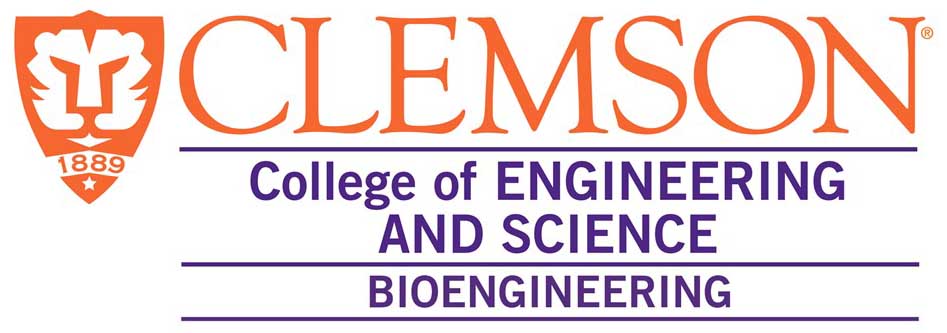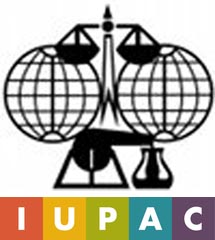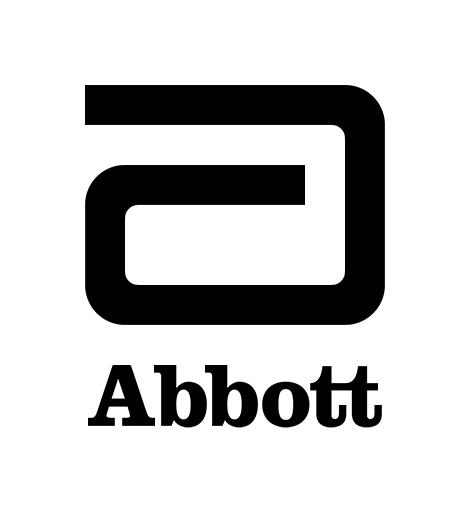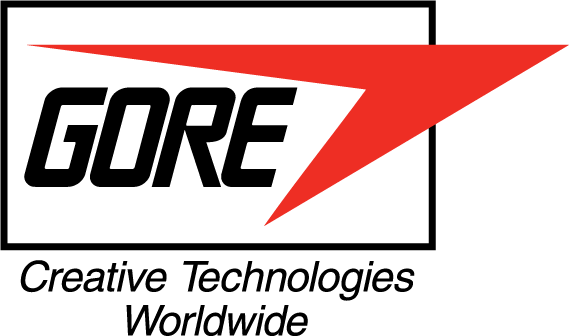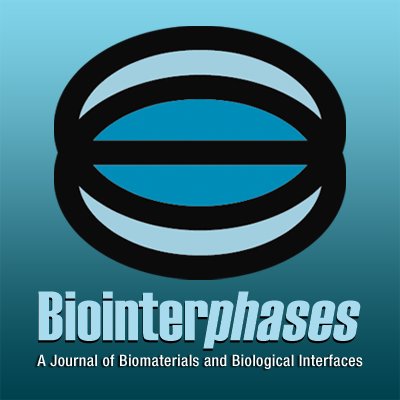Bloodsurf2017
Speakers
|
Ali N. Azadani is an Assistant Professor in the Department of Mechanical and Materials Engi-
neering at the University of Denver, CO, USA
|
|
|
Interests: Structural heart disease including transcatheter heart valve replacement
and development of patient-specific therapeutic strategies.
Dr. Azadani's multidisciplinary research group at the University of Denver focuses on applied
and translational research in cardiovascular diseases. Research projects encompass structural heart disease and valvular
heart disease, including transcatheter heart valve replacement and development of
patient-specific therapeutic strategies. Computational and experimental approaches are used
to obtain greater insight into the complex pathways of cardiovascular diseases,
and thereby to develop new diagnostic and therapeutic devices.
Website
DU Cardiovascular Biomechanics Lab
|
John Brash, Distinguished University Professor, McMaster University, Hamilton, Ontario, Canada.
|
|
|
Interests: biomaterials, blood-material interactions, blood compatible materials, surface modification.
The group of Professor Brash works on biomaterials and biocompatibility with emphasis on materials for use in contact with blood. A major limitation in these situations is the formation of thrombus, the initiating event being the adsorption of proteins at the blood-material interface. Accordingly the behaviour of proteins at interfaces is an important underlying theme of our work. The design of surfaces based on controlling protein interfacial interactions in blood is also a major theme. Examples are surfaces that prevent protein adsorption entirely, and surfaces that “select” for specific proteins such as antithrombin to inhibit coagulation, and plasminogen/t-PA to promote fibrinolysis.
Website
|
|
|
Lawrence F. Brass, MD PhD, Professor of Medicine, Professor of Systems Pharmacology and Translational Therapeutics, University of Pennsylvania, Perelman School of Medicine, Philadelphia, Pennsylvania
|
|
|
Interests: platelet activation, signal transduction networks, applying systems approaches to hemostasis and thrombosis.
Current efforts in the group of Dr. Brass focus on understanding the molecular events that underlie platelet activation and the conversion of circulating platelets to fully adherent platelets using human and mouse models. Increasingly, this means using a systems approach to combine data on the platelet signaling network with emerging ideas about platelet activation as it occurs in the complex environment found in vivo under both normal and pathological conditions.
Website
|
|
|
|
|
|
Steffen Braune, Postdoctoral Fellow, Institute of Biomaterial Science and Berlin-Brandenburg Center for Regenerative Therapies, Helmholtz-Zentrum Geesthacht (HZG), Teltow, Germany
|
|
|
Interests: Polymer-Based Biomaterials, Functionalization of Biomaterial Surfaces, Interactions at the Blood-Biomaterial Interphase (e.g. Proteins, Platelets, Vascular Tissue Cells), Development and Standardization of in vitro test setups (Biocompatibility, Thrombogenicity, Hemocompatibility)
Since 2008, Steffen Braune is working in the department of Prof. Friedrich Jung (Biointerface Engineering) at the HZG in Teltow. The group focuses on the development and particularly the biological evaluation of new multifunctional polymer-based biomaterials, mainly for cardiovascular applications. Assays for biocompatibility, thrombogenicity and hemocompatibility are carried out according to the ISO norm standards. Very recent studies of the group comprise the inter-laboratory standardization of in vitro assays and the interaction of biomaterials with platelets from patients with cardiovascular diseases.
Website
|
|
|
|
|
|
Scott L. Diamond, Arthur E. Humphrey Professor Chemical and Biomolecular Engineering (CBE) and Bioengineering (BE), University of Pennsylvania School of Engineering and Applied Science, Philadelphia, PA, USA.
|
|
|
Interests: Bioadhesion, Coagulation, Drug Discovery, Gene Therapy, Mechanobiology, Systems Biology, Proteomics, Thrombolysis.
Among others, the laboratory of Scott Diamond has an interest in systems biology of coagulation and stochastic smiulations of blood coagulation.
Website
Website
|
|
|
|
|
|
Andrew L. (Larry) Frelinger, PhD., Assistant Professor of Pediatrics at Harvard Medical School, Associate Director, Center for Platelet Research Studies, Boston Children's Hospital, Boston, Massachusetts, USA
|
|
|
Interests:
1) antiplatelet therapy as a treatment modality for sickle cell disease 2) the effects of thrombopoietin mimetics on platelet activation, 3) novel diadenosine tetraphosphate analogs with dual specificity for platelet P2Y1 and P2Y12 ADP receptors for their potential as anti-platelet drugs, 4) platelet function as a contributor to bleeding in immune thrombocytopenia, 5) platelets as models of neurons, and 6) induced pluripotent stem cell-derived platelets for therapeutic applications.
Website
|
|
|
|
|
|
Lara Gamble, Research Associate Professor, Biomaterials and Regenerative Medicine, University of Washington, Seattle, WA
|
|
|
Interests: Development and application of ultra-high vacuum applying analytical techniques to biomedical problems.
Surface Analysis; Surface Modification; Biomaterials; Mass Spectral Imaging.
The work in prof. Gamble's group focuses on the development of techniques (sample preparation, technique development, data processing, and data analysis)
for analysis of biomolecule-surface interfaces and chemical imaging of biologically relevant samples. Using imaging secondary ion mass spectrometry, 3D images of cells at sub-cellular resolution and with chemical specificity can be obtained. This opens up a range of possibilities for better understanding and diagnosing biological processes such as tumor microenvironments, lipid metabolomics relationship to cancer, tissue repair, and chemical analysis of tissue and/or cells on a cellular and sub-cellular level.
Website
|
|
|
|
|
|
Maud Gorbet, Professor and Chair, Biomedical Engineering, University of Waterloo, Waterloo, Ontario, Canada
|
|
|
Interests: Understanding the interaction of biological and biomaterial systems at the cellular level. Biocompatibility with biomaterials and biomedical devices. Mechanisms of material-induced thrombosis (blood clot formation) with mechanical heart valves and coronary stents. Ophthalmic biomaterials (such as soft contact lenses and keratoprosthesis).
While biomedical devices have significantly improved quality of life and increased life expectancy of millions of people, their use is fraught with complications such as infection (vascular grafts, contact lenses), thrombosis (blood clot formation on cardiovascular devices such as mechanical heart valve) and fibrosis (orthopaedic implants, glaucoma shunts). Although the overall rate of complications remains low, the consequences are often grave and constly.
Research in Prof. Gorbet's laboratory aims to understand interactions between biomaterials and biological systems. A better understanding of the mechanisms of material-induced cellular activation will enable the design of materials and/or therapeutic strategies that improve biocompatibility and hence reduce the risks of complications and failures.
Website
|
|
|
|
|
|
Hitesh Handa, Assistant Professor, College of Engineering, University of Georgia, Athens, GA, USA
|
|
|
Interests: Development of medical device coatings based on NO-release formulations to prevent thrombosis.
The group of Prof. Handa is developing novel materials that can prevent thrombosis and infection for potential medical device applications based on nitric oxide (NO)-generating polymer coatings, and designing animal models and clinical studies to test their performance in preventing complications arising from the interactions between blood and foreign materials.
Website
|
|
|
|
|
|
Lisa K. Jennings, Director of the UTHSC Vascular Biology Center of Excellence and Professor of Medicine at the University of Tennessee Health Science Center (UTHSC) in Memphis, TN, USA
|
|
|
Interests: platelet and vascular smooth muscle cell biology; Biology of GPIIb-IIIa and its function on thrombus stability and platelet reactivity; Anti-platelet and anticoagulant therapies;
Dr. Jennings has an established research program in the area of platelet and vascular smooth muscle cell biology, specifically the function of surface membrane receptors and associated signaling pathways. She has primarily focused on the biology of GPIIb-IIIa and its function on thrombus stability and platelet reactivity including shear induced platelet activation. She has internationally- recognized expertise in the development, study and evaluation of antiplatelet agents and anticoagulants, including the design and conduct of the pharmacodynamic assessment of these agents in preclinical/translational studies and clinical trials. Her other research efforts concentrate on vascular injury response and inflammation, particularly signaling pathways associated with neointimal hyperplasia and atherogenesis.
CirquestLabs Website
Website
|
|
|
|
|
|
Eugene M. Langan, MD, Chairman of the Surgery Department, Greenville Health System, SC, USA.
|
|
|
Interests:Open and endovascular surgery in the treatment of carotid, aortic and peripheral arterial disease.
Dr. Eugene M. Langan is the chairman of the Surgery Department of the Greenville Health System in Greenville, SC, and a Fellow of the American College of Surgeons and a Distinguished Fellow in the Society for Vascular Surgery. He will provide a broad-based clinical perspective on the present-day challenges involving the use of medical devices for the treatment of cardiovascular and vascular disease.
Website
|
|
|
|
|
|
Robert A. Latour, McQueen-Quattlebaum Professor of Bioengineering, Clemson University, Clemson, SC, USA
|
|
|
Interests: Molecular basis of protein-surface interactions and platelet response.
The group of prof. Latour uses experimental measurements of adsorbed protein structure, functional tests, and simulations, to understand the changes induced by foreign surfaces in adsorbing proteins and their effect on the interactions between these proteins and other entities (other proteins, cells, platelets, etc).
Website
|
|
|
|
|
|
Thomas Lindahl, Professor, M.D. and senior consultant, Department of Clinical and Experimental Medicine, Clinical Chemistry, Linköping University, Sweden
|
|
|
Interests: Hemostasis, blood-biomaterial interactions, platelet activation, coagulation, and protein adsorption at biomaterial surfaces.
The group of Tomas Lindahl studies blood–surface interactions in terms of surface induced plasma coagulation and platelet adhesion/aggregation. The group develops in vitro flow models for cardiovascular research and to study the role of flow and shear stress on hemostasis and thrombosis in such models. Much effort is put on quantification of deposition and movements of platelets. In addition, the group studies regulation of platelet activation with thrombin receptors and antithrombotic agents in focus.
Hemostasis group in Linkoping website.
|
|
|
|
|
|
Buddy Ratner, Professor of Bioengineering and Chemical Engineering, University of Washington, Seattle, WA, USA
|
|
|
Interests: Synthesis and characterization of polymeric biomaterials. Surface analysis by ESCA, SIMS, STM, FTIR-ATR, AFM. Plasma deposition of thin films. Tissue engineering. Blood-material interactions.
Medical devices and implants are engineered from specially designed materials, often referred to as biomaterials. Millions of devices and implants are used clinically in applications as diverse as blood vessel replacements, catheters, contact lenses, hip joints, ventricular assist devices and artificial kidneys. The biocompatibility of these prostheses is dictated by their surface properties and by the local mechanical environment they induce. In my research program, biomaterials are engineered to control biological interactions, synthesized, characterized and observed during interaction with biological systems.
Website
|
|
|
|
|
|
|
|
|
|
|
Christopher Siedlecki, Biomedical Engineering Institute and the Department of Bioengineering, Pennsylvania State University, PA.
|
|
|
Interests: Biomaterials. Blood-biomaterial interactions. Analytical, nano- and microfabrication methodologies, mathematical modeling applied to unraveling blood-biomaterial interactions.
The relationships between the implanted biomaterial, the circulating plasma proteins, and the cellular elements of blood are poorly understood, particularly at the molecular and submolecular levels. Therefore, the research efforts in the laboratory of Prof. Siedlecki are focused towards understanding the molecular mechanisms responsible for thrombogenesis on implanted cardiovascular biomaterials.
Website
|
|
|
|
|
|
|
|
|
|
|
Qijin Lu, Office of Science and Engineering Laboratories, Center for Devices and Radiological Health (CDRH), US Food and Drug Administration (FDA), Silver Spring, MD, USA
|
|
|
Interests: Hemocompatibility evaluation of blood-contacting medical devices and biomaterials, platelet activation testing, static and dynamic thrombogenicity test method development.
Dr. Lu has been working at the FDA as a hemocompatibility researcher and medical device reviewer for over 10 years. In the In Vitro Blood Damage Assessment Laboratory at CDRH/FDA, Dr. Lu’s research has focused on blood compatibility evaluations of medical devices and biomaterials. He serves as a CDRH/FDA liaison or technical expert for multiple national/international standards working groups, and has participated in the drafting, reviewing, and revision of numerous standards and FDA Guidance documents. Dr. Lu also acts as a scientific regulatory reviewer for the testing and safety evaluation of blood-contacting medical devices.
Research Program Website
|
|
|
|
Michael Wolf, Scientist and Technical Fellow, Medtronic Inc., Minneapolis, MN, USA
|
|
|
Interests: biomaterials, blood-material interactions, vascular tissue compatible materials, surface modification to improve material properties; mechanisms of material-induced thrombosis; developing and applying in vitro and in vivo methods/models; applying modern experimental design approaches to better understand and solve complex problems; standardization of methods of assessing and reporting blood-biomaterial interactions.
In his work and research in the Blood Compatibility Laboratory at Medtronic, Michael F. Wolf has focused heavily in the areas of characterizing and improving how blood- and vascular tissue-contacting devices/materials interact with the body, using both in vitro and in vivo models. This work has covered device areas such as CPB equipment, mechanical heart valves, vascular grafts, vascular stents, and cardiac pacing and hemodynamic sensors. Mr. Wolf has also been active in development of standards for medical devices, serving as subject matter expert, chairperson, and convener (presently) to the ISO TC/194 working group focused on ISO 10993 Biological evaluation of medical devices - Part 4: selection of tests for interactions with blood.
|

